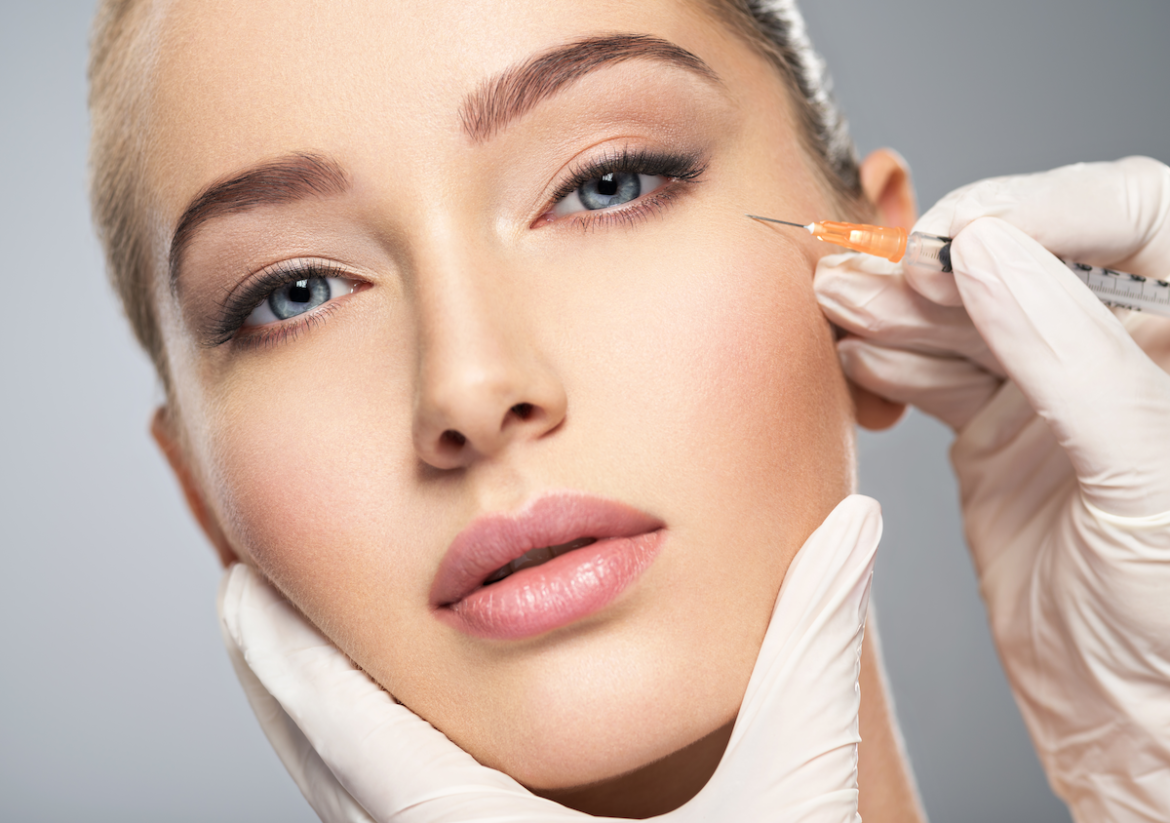Botox®: Smoothing Lines and Wrinkles

As we age, it is inevitable that our faces develop fine lines and wrinkles. Stress, sun damage, smoking and other environmental factors can make these even more apparent. The development of frown lines in the forehead, crow’s feet around the eyes and lines around the mouth and even droopy eyelids, can make us look older than we feel. In the United States last year, over six million treatments for fine lines and wrinkles were performed with Botox® Cosmetic or its equivalents (Dysport® and Xeomin®). The procedures were performed on people in all age categories and lifestyles.

WHAT IS BOTOX®
Botox® Cosmetic is a registered brand name of a toxin that is produced from the bacterium Clostridium botulinum. This extremely dangerous neurotoxin is associated with the form of food poisoning known as botulism. One microgram of botulinum can be lethal when inhaled. However, very small controlled amounts of the toxin have been shown to have significant positive effects for conditions like uncontrolled blinking, extreme sweating, migraine headaches, lazy eye and the FDA approved Botox® for these uses in 1989. In 2002, the FDA approved Botox® for limited cosmetic purposes. Specifically, Botox® has been approved to reduce crow’s feet around the eyes, frown lines between the eye brows and in the spring of 2017, lines in the forehead. Cosmetic off-label uses of Botox® have included lines around the lips, between the nose and mouth and ridges on the neck.
HOW DOES BOTOX® WORK?
Fine lines and wrinkles are often caused by repeated muscle movements in the face. A line will develop perpendicular to the muscle. For example, muscles in the forehead are vertical and so repeated muscle movements throughout the day can create a horizontal line across the forehead. Botox® works to block acetylcholine, the nerve transmitter that causes muscles to contract. By injecting Botox® into the muscle, it stops or reduces these repeated muscle movements, allowing the facial lines to relax and soften, reducing the appearance of fine lines and wrinkles.
The impact of Botox® is temporary, lasting three to four months depending the on the age and skin condition of the individual. It is important to understand that Botox® is not a dermal filler, which are used to plump the skin in areas with deep lines (e.g., the lines from nose to mouth). Facial lines that exist when your face is relaxed may require a filler (e.g., Voluma, Juvederm, Sculptra®) rather than Botox® injections.
Botox® injections take about 10 minutes and require no downtime. Typically, the patient will see improvements within two to four days, with the maximum benefit shown in 10 to 14 days. There are rarely side effects from Botox® injections. However, infection, swelling, redness and bruising can occur. Some have reported dry mouth, neck pain and headache as side effects also.
PREPARING FOR BOTOX®
Advertisements for Botox® suggest that you can have this treatment almost anywhere and performed by almost anyone. Patients have reported that their dentist, podiatrist and even estheticians at their beauty salons are performing Botox® injections. “Real Self” doctors and members have created a list of 14 things that people wished they knew before having Botox. The number one item is choosing the right provider. The treatment needs to be performed by a medically-trained and experienced professional, not just anyone. Often it is recommended that you visit a board-certified plastic surgeon or dermatologist. Even if the treatment is performed by a nurse, nurse practitioner or physician’s assistant, they should be trained and supervised by a medical professional.
In Massachusetts, the law requires that two sets of eyes are on the diagnosis and treatment related to medical aesthetics. Currently, technologies are available that permit the medical professional to take a picture of the patient’s face, indicate the exact locations of the recommended Botox® injections and to upload them in real time to the medical officer for review and potential changes to the injection sites.
As the area around the eyes has many nerves and blood vessels, injections that are two deep, two low or in the wrong spot could create side effects. This is also true for using the wrong number of units of Botox® or dilution that could cause near-by muscles to relax, causing other unwanted side effects.
In identifying your provider, take the time to review their website, look at their before and after pictures, read their testimonials and look at online reviews that exist for the location. This research will be invaluable in preparing for a consultation with the medical professions. Price shopping for a few-dollar discount per unit of Botox® is not worth the potential side effects of using an inexperienced or untrained provider.
It has been suggested that Botox® may even be preventative, by relaxing muscles where lines are likely to develop. Repeated use of Botox® also may result in increasing the longevity of any treatment.
ENHANCING YOUR BOTOX® TREATMENT
As Botox® injections are temporary and need to be repeated every three to four months, finding ways to enhance or extend the treatment can be valuable and provide a cost saving. Different medical professionals may recommend between 20 and 50 units of Botox® for a treatment. However, combining the injection with other therapies that work to hydrate the face may actually allow each treatment to use fewer units of Botox® and extend the effective life of the Botox®. Consider combining Botox® injections with IV Hydration treatments, Hydrafacial or CooLifting. Meeting with a medical professional for a private consultation will not only ensure that you are getting the right treatments to achieve your objectives but that an overall treatment plan may prove to be more efficient and cost effective, resulting in a more favorable result and experience.
